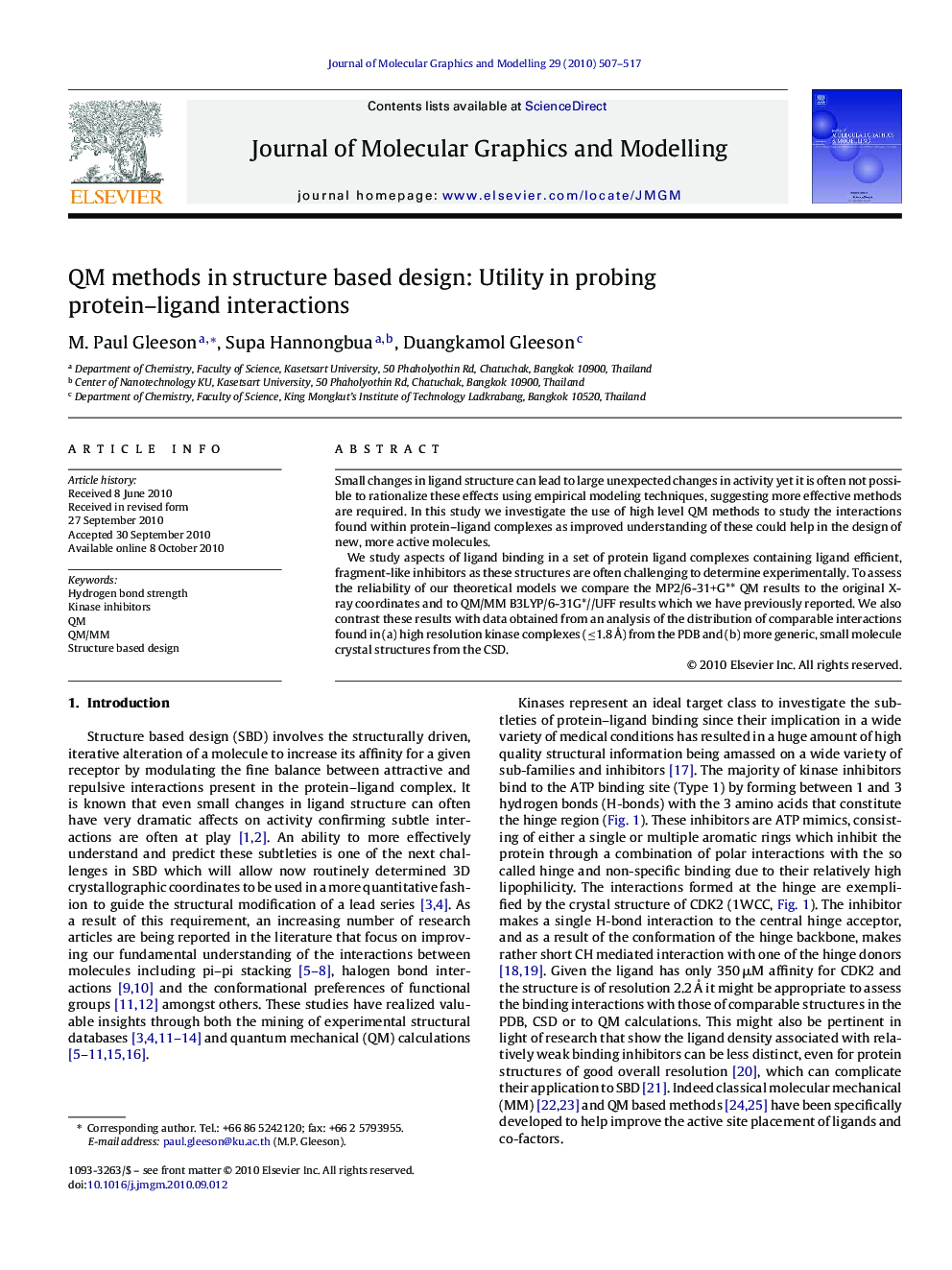| Article ID | Journal | Published Year | Pages | File Type |
|---|---|---|---|---|
| 443498 | Journal of Molecular Graphics and Modelling | 2010 | 11 Pages |
Small changes in ligand structure can lead to large unexpected changes in activity yet it is often not possible to rationalize these effects using empirical modeling techniques, suggesting more effective methods are required. In this study we investigate the use of high level QM methods to study the interactions found within protein–ligand complexes as improved understanding of these could help in the design of new, more active molecules.We study aspects of ligand binding in a set of protein ligand complexes containing ligand efficient, fragment-like inhibitors as these structures are often challenging to determine experimentally. To assess the reliability of our theoretical models we compare the MP2/6-31+G** QM results to the original X-ray coordinates and to QM/MM B3LYP/6-31G*//UFF results which we have previously reported. We also contrast these results with data obtained from an analysis of the distribution of comparable interactions found in (a) high resolution kinase complexes (≤1.8 Å) from the PDB and (b) more generic, small molecule crystal structures from the CSD.
Graphical abstractFigure optionsDownload full-size imageDownload high-quality image (76 K)Download as PowerPoint slideResearch highlights▶ QM calculations have utility in structure based design applications. ▶ QM calculations can be used to determine the relative strength of interactions found in protein–ligand complexes. ▶ QM calculations can provide useful information to help design more active ligands.
